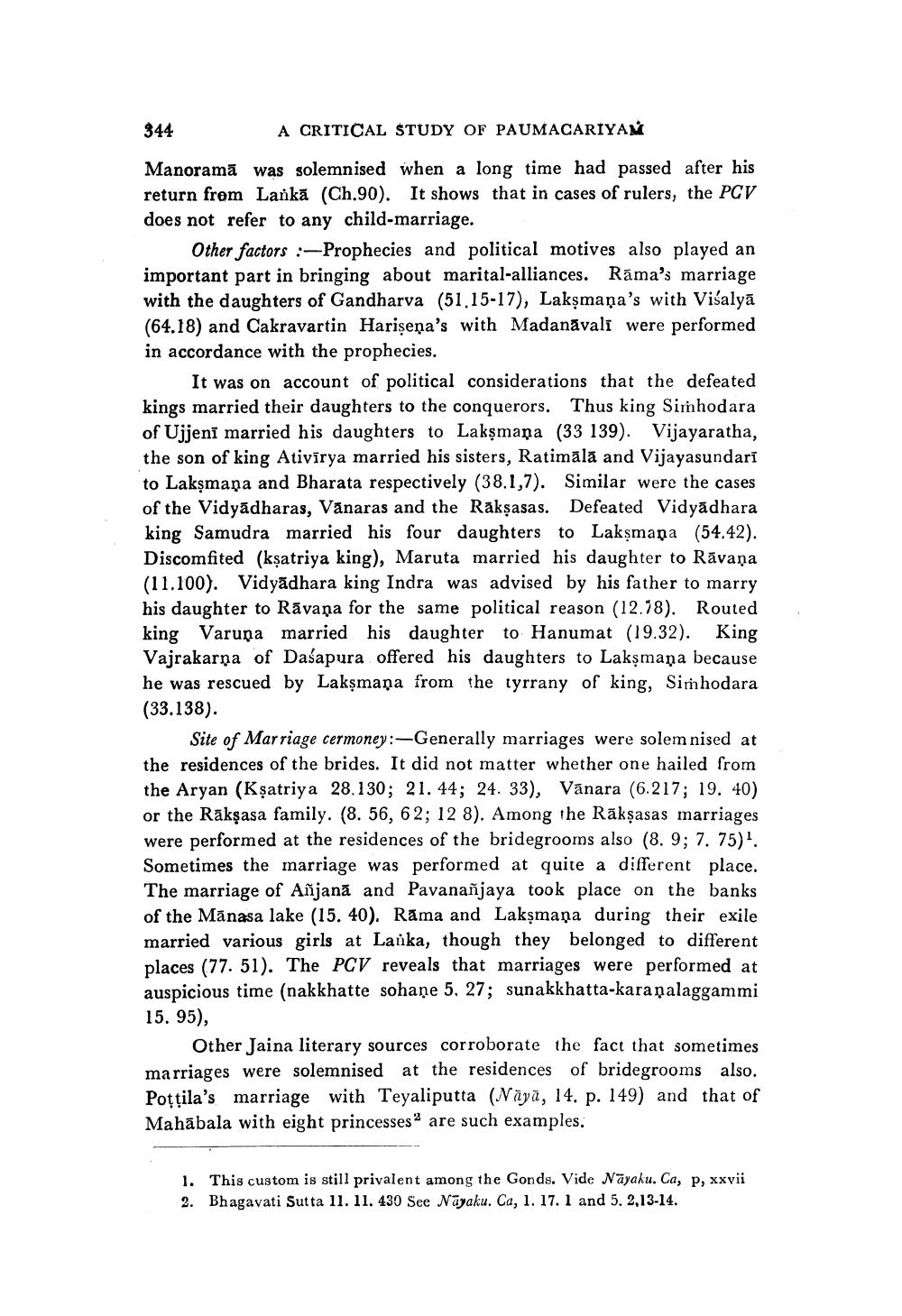________________
344
A CRITICAL STUDY OF PAUMACARIYAM
Manorama was solemnised when a long time had passed after his return from Lanka (Ch.90). It shows that in cases of rulers, the PCV does not refer to any child-marriage.
Other factors-Prophecies and political motives also played an important part in bringing about marital-alliances. Rama's marriage with the daughters of Gandharva (51.15-17), Lakṣmaṇa's with Visalya (64.18) and Cakravartin Hariṣeņa's with Madanāvalī were performed in accordance with the prophecies.
It was on account of political considerations that the defeated kings married their daughters to the conquerors. Thus king Simhodara of Ujjeni married his daughters to Lakṣmana (33 139). Vijayaratha, the son of king Ativīrya married his sisters, Ratimālā and Vijayasundarī to Lakṣmana and Bharata respectively (38.1,7). Similar were the cases of the Vidyadharas, Vanaras and the Rākṣasas. Defeated Vidyadhara king Samudra married his four daughters to Lakṣmaņa (54.42). Discomfited (kṣatriya king), Maruta married his daughter to Rāvana (11.100). Vidyadhara king Indra was advised by his father to marry his daughter to Ravana for the same political reason (12.18). Routed king Varuna married his daughter to Hanumat (19.32). King Vajrakarna of Daśapura offered his daughters to Lakṣmaṇa because he was rescued by Lakṣmaṇa from the tyrrany of king, Simhodara (33.138).
Site of Marriage cermoney:-Generally marriages were solemnised at the residences of the brides. It did not matter whether one hailed from the Aryan (Ksatriya 28.130; 21. 44; 24. 33), Vanara (6.217; 19. 40) or the Rākṣasa family. (8. 56, 62; 12 8). Among the Rākṣasas marriages were performed at the residences of the bridegrooms also (8. 9; 7. 75)1. Sometimes the marriage was performed at quite a different place. The marriage of Añjana and Pavanañjaya took place on the banks of the Manasa lake (15. 40). Rāma and Lakṣmaņa during their exile married various girls at Lanka, though they belonged to different places (77. 51). The PCV reveals that marriages were performed at auspicious time (nakkhatte sohane 5. 27; sunakkhatta-kara palaggammi 15.95),
Other Jaina literary sources corroborate the fact that sometimes marriages were solemnised at the residences of bridegrooms also. Pottila's marriage with Teyaliputta (Naya, 14. p. 149) and that of Mahabala with eight princesses are such examples.
1. This custom is still privalent among the Gonds. Vide Nayaku. Ca, p, xxvii 2. Bhagavati Sutta 11. 11. 430 See Nayaku. Ca, 1. 17. 1 and 5. 2,13-14.




